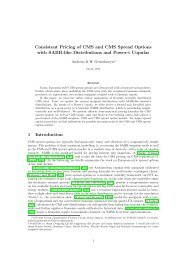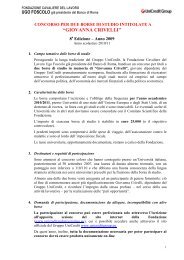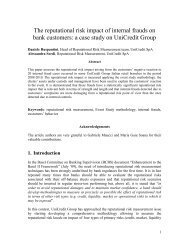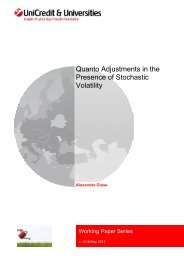Dóra Fazekas Carbon Market Implications for new EU - UniCredit ...
Dóra Fazekas Carbon Market Implications for new EU - UniCredit ...
Dóra Fazekas Carbon Market Implications for new EU - UniCredit ...
Create successful ePaper yourself
Turn your PDF publications into a flip-book with our unique Google optimized e-Paper software.
IV. EXPERIENCES OF THE <strong>EU</strong> ETS PILOT PHASE<br />
This dissertation presented the pilot phase of the <strong>EU</strong> ETS between 2005 and 2007 in Hungary. The<br />
results contradict prevalent international opinion that emissions trading as a market-based<br />
environmental tool cannot be successfully implemented in a country that has lacked the necessary<br />
institutions, experience with markets and practices (Skjærseth - Wettestad, 2007, p. 264.).<br />
This dissertation is among the first attempts to study CITL data. Only two studies (Kerr, 2007;<br />
Trotignon and Ellerman, 2008) have recently been published based on CITL analyses. This<br />
dissertation examines not only the CITL data, but also the aggregate transfer data of the Hungarian<br />
trading registry, provided directly by the registry <strong>for</strong> this project. This dissertation is among the first<br />
to interpret the differences between the two databases and to point out that surrendered amounts<br />
indicated in the CITL do not reflect real emission allowance transactions. It may be concluded that<br />
it is prudent to use the CITL records and the national registry data together in parallel, as the two<br />
databases contain in<strong>for</strong>mation to complement each other. Although CITL data do not precisely<br />
depict international transactions and their schedules, they may be useful <strong>for</strong> inferring which<br />
Member States’ companies entered into transactions with the installations in a given Member State.<br />
The data of the national registries may be used to determine the precise quantity, scheduling and<br />
value of national transfers.<br />
The <strong>EU</strong>’s CO2 emissions trading scheme represents an entirely <strong>new</strong> approach, both from the<br />
perspective of parties regulated and from the perspective of regulators. The system called <strong>for</strong> a <strong>new</strong><br />
approach on the part of all stakeholders. The dissertation examined whether expectations of the<br />
pilot phase were fulfilled. During the three years of the pilot phase, a <strong>new</strong> resource was created –<br />
the carbon emissions allowance. Hungarian entities established the necessary institutional<br />
framework and oversight mechanisms. The Government of Hungary and installations obligated to<br />
participate in the scheme came to understand the workings of emissions trading. Producers are able<br />
to appropriately measure and track their emissions – this is a key result of the pilot phase: <strong>EU</strong><br />
Member States now have reliable and verified emissions data available going back to 2005.<br />
This <strong>new</strong> factor of production, however, failed to take root in individuals’ mindset during the three<br />
years of the pilot phase. It did not become ingrained in corporate decision-making and company<br />
executives did not prepare <strong>for</strong> expenses related to the emission of carbon dioxide. The fact that CO2<br />
costs failed to become integrated into company price calculations is most likely due to the<br />
abundance of allowances available during the pilot phase, rather than to differences between<br />
Eastern and Western MSs.<br />
185









